
AWeber Review (2025): Is It Still Worth Purchasing?
AWeber has been around for decades, and if you’ve been in email marketing for a while, chances are you’ve heard of it or even used it. After all, it’s one of the names that built the industry.
But the big question in 2025 is whether AWeber has evolved enough to keep up with newer, more powerful tools on the market.
I wanted to find out for myself, so I dug into the platform and put its features to the test. To make my AWeber review more complete, I then compared my experience with what other real users are saying today.
In this review, I’ll walk you through AWeber’s strengths, shortcomings, and whether it’s still a smart choice for email marketers this year.
Disclaimer: The information below is accurate as of September 2025.
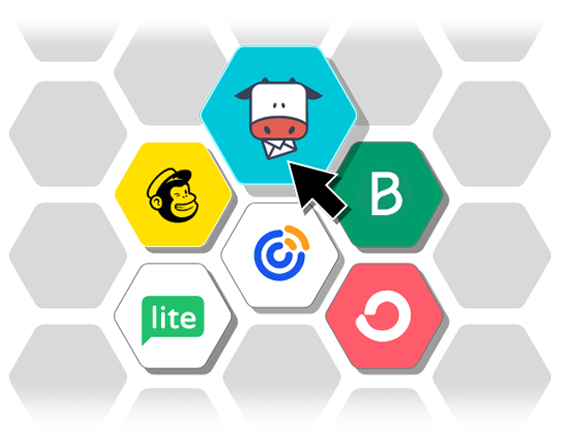
Save $$$ of your marketing budget by switching to Moosend today!
AWeber Overview & Ratings
AWeber is an email marketing platform offering useful marketing tools for digital businesses, eCommerce stores, and online creators. Some of the most notable ones include a user-friendly email editor, the ability to sell digital products, the landing page builder, and web push notifications.
It also comes with a vast list of integrations to connect with other third-party apps you’re using. As such, the platform is ideal for businesses looking for a simple tool that doesn’t overwhelm users with an extensive set of features.
AWeber’s main drawback, though, is that it charges a “premium” price for what it offers (compared to other tools). Specifically, the lowest-tier Lite plan starts at $15/month, allowing 1 custom segment, 3 landing pages, and 1 automation. However, it doesn’t include advanced landing page features and sales tracking.
To get started, let’s see a brief evaluation of the platform’s main features.

AWeber Feature Breakdown
Below, let’s take a look at AWeber’s main features, their pros and cons, so that you can ultimately decide whether it’s worth the price tag.
Email Builder
Similar to most email marketing services, AWeber has a drag-and-drop email builder. From the moment I started creating a test campaign, it felt familiar and easy to use. You get a wide range of content blocks to insert into your campaigns, such as images, buttons, products, coupons, and RSS feeds.
You can also change color schemes easily and add free stock photos to your campaigns thanks to its integration with Unsplash.

Regarding formatting the layout of your emails, AWeber works in rows. Each row can contain individual elements that you arrange where you like. This is different from other AWeber alternatives like Moosend or ActiveCampaign, which also let you insert pre-designed layouts.
To make your campaigns feel personal, AWeber lets you use variables that draw info like the subscriber’s name, address, or other signup data.
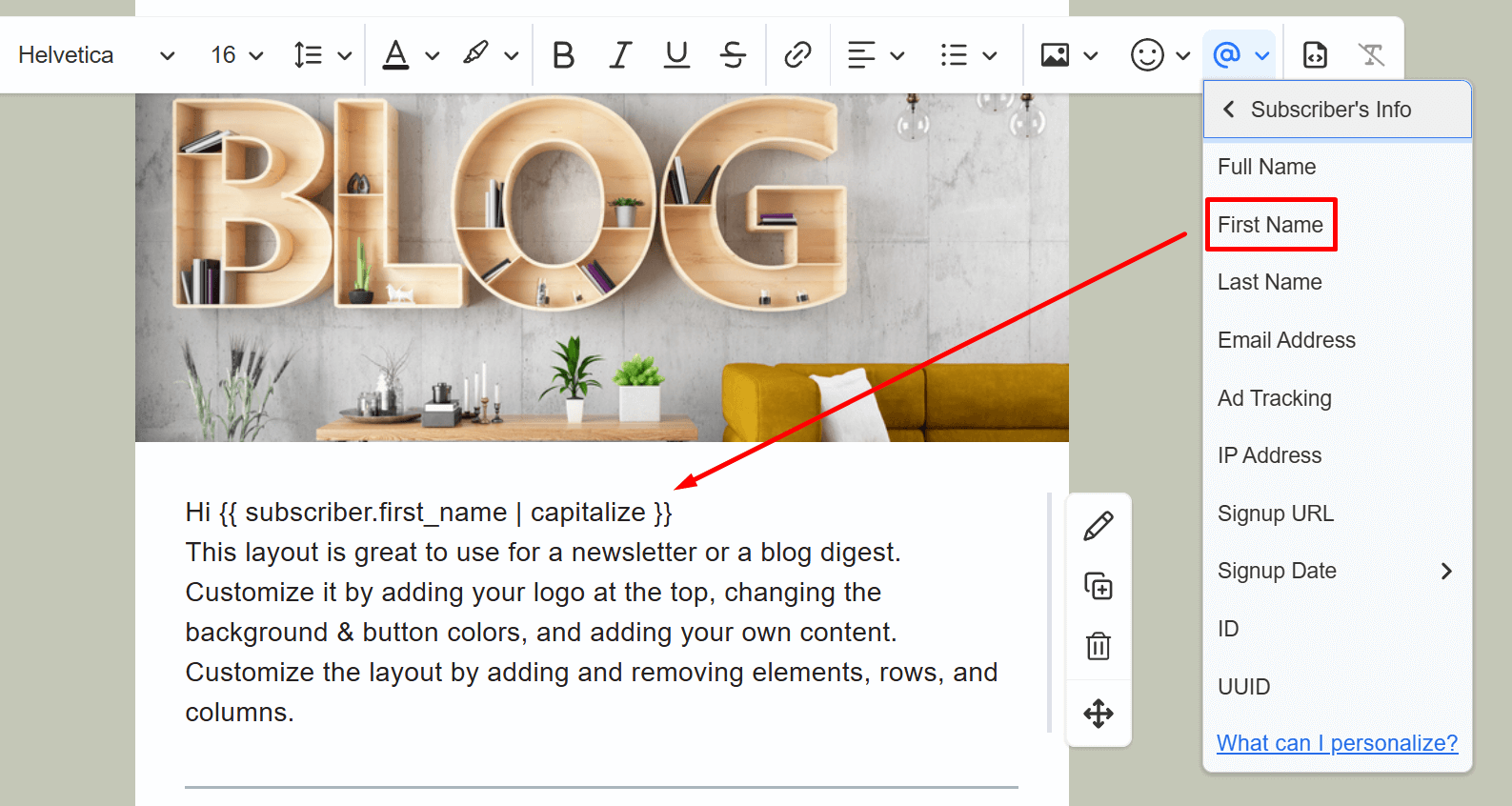
There are also operators that display specific content when certain conditions are met (conditional visibility content). However, this may feel difficult for beginners since you need to use some short code snippets.
Another interesting feature is its Canva integration, which makes image editing a piece of cake. With a click of a button, you can upload your images and customize them with filters, effects, and illustrations, without leaving the app. You can also design banners. Even if you’re a complete beginner, it only takes a few minutes to get the hang of it.
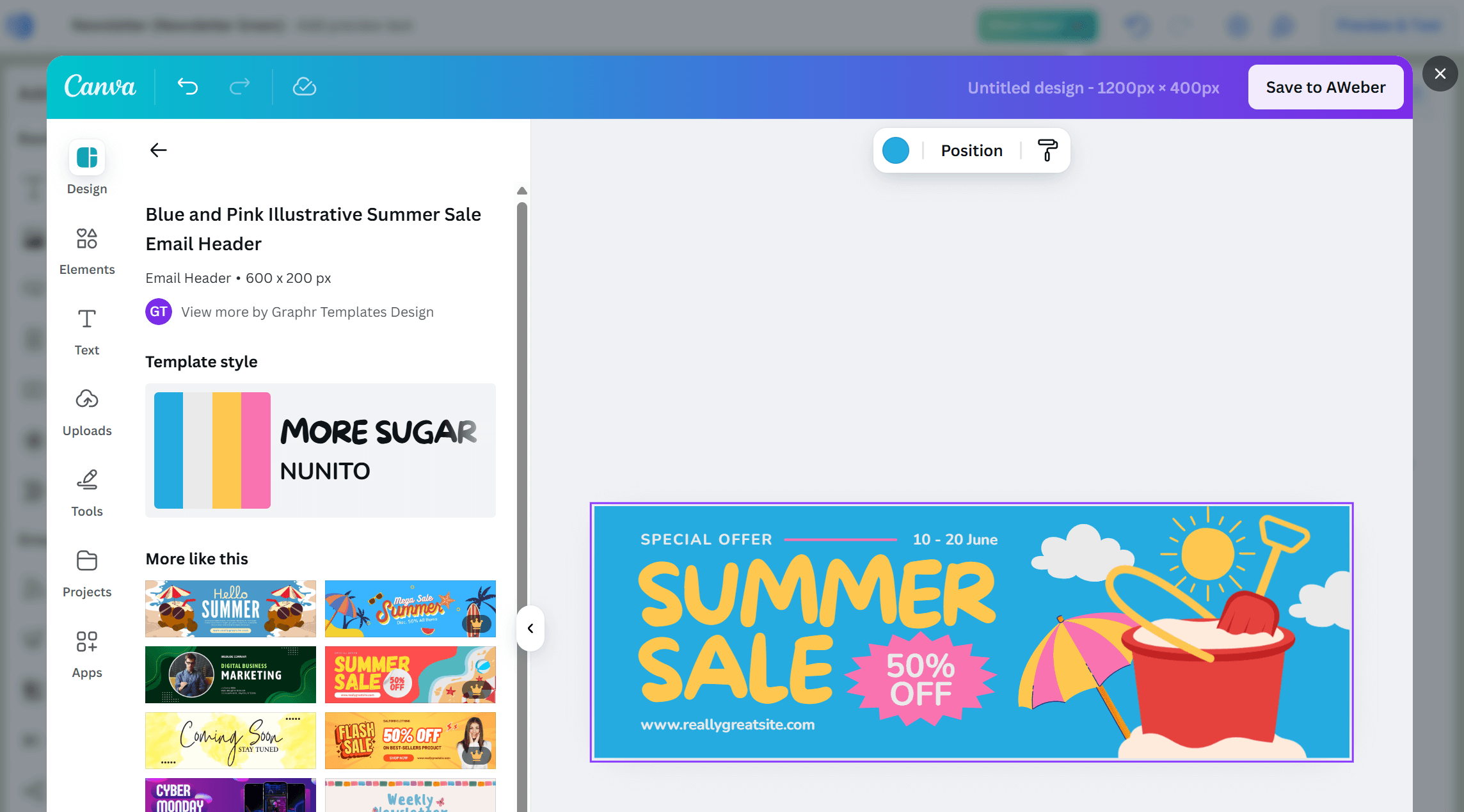
AWeber also supports AMP for email, allowing you to create interactive campaigns by adding elements like image carousels, lightboxes, forms, or sidebars.
While this sounds amazing, you’ll need technical skills to implement as the only drag-and-drop AMP component currently available is a gallery carousel.
For advanced users, AWeber has introduced a Markdown tool to format your email text through symbols (e.g., type ** before your copy to make it bold), speeding up your writing process. There’s also an AI Assistant for generating ideas and email copy for you.
Finally, another handy feature I found is Link Previews. When you insert a link into your email campaign, it gets automatically converted into a preview of the link’s content (including an image, title and description). This is a major time-saver since you don’t need to spend extra time formatting.
Email Template Library
AWeber offers a wide selection of customizable email templates. Some of them also come in different color schemes, so you can choose the one that you like best. Finding the one you need is easy, as they are categorized (e.g., templates for events, holidays, promotions, etc.).
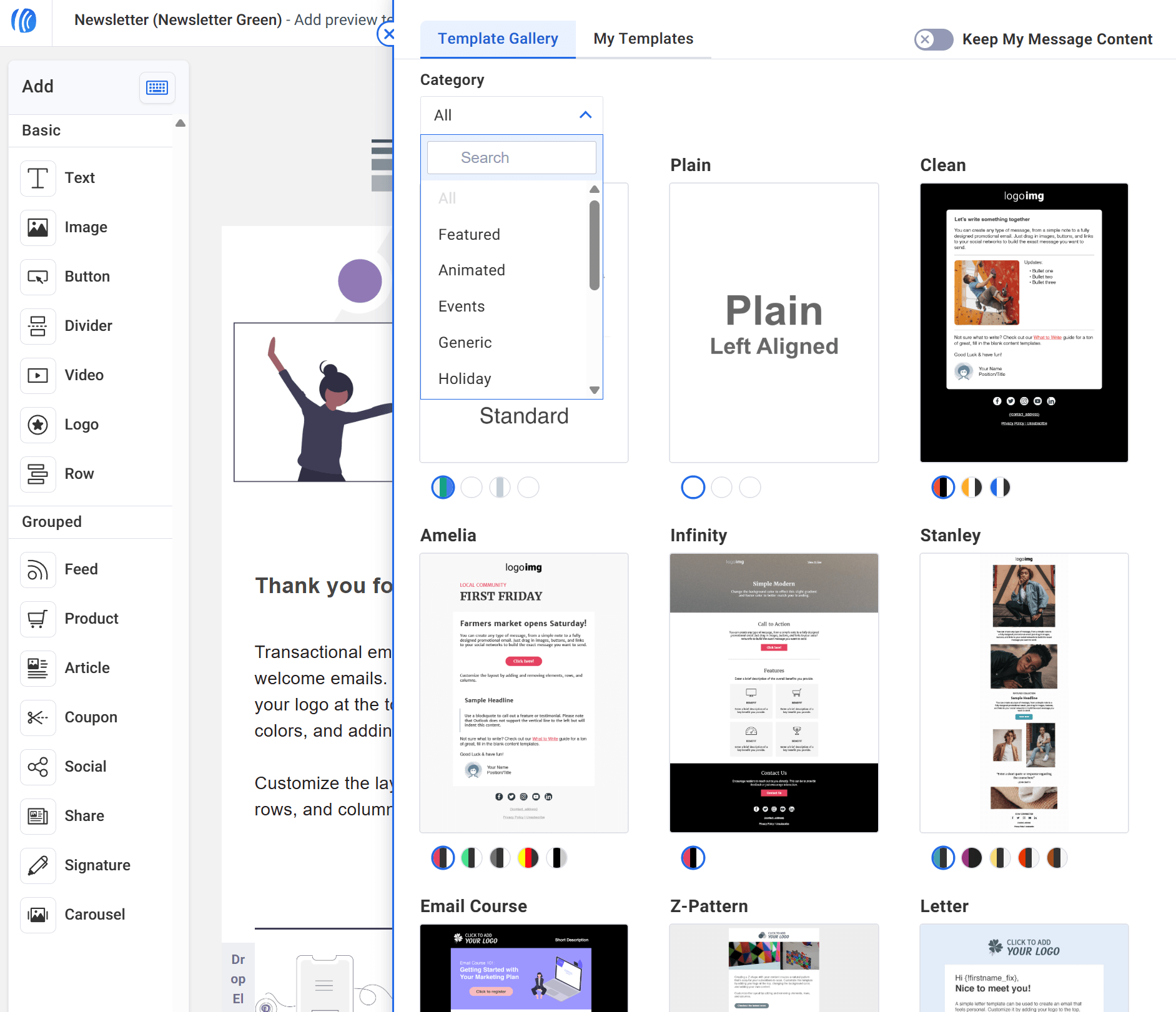
Upon searching the library, I found that all available templates are responsive, ensuring they will work well on any display. Advanced users also have the option to code their templates themselves.
Another (easy) way to create templates is AWeber’s Smart Designer. This tool can automatically create branded templates based on your website or a landing page.
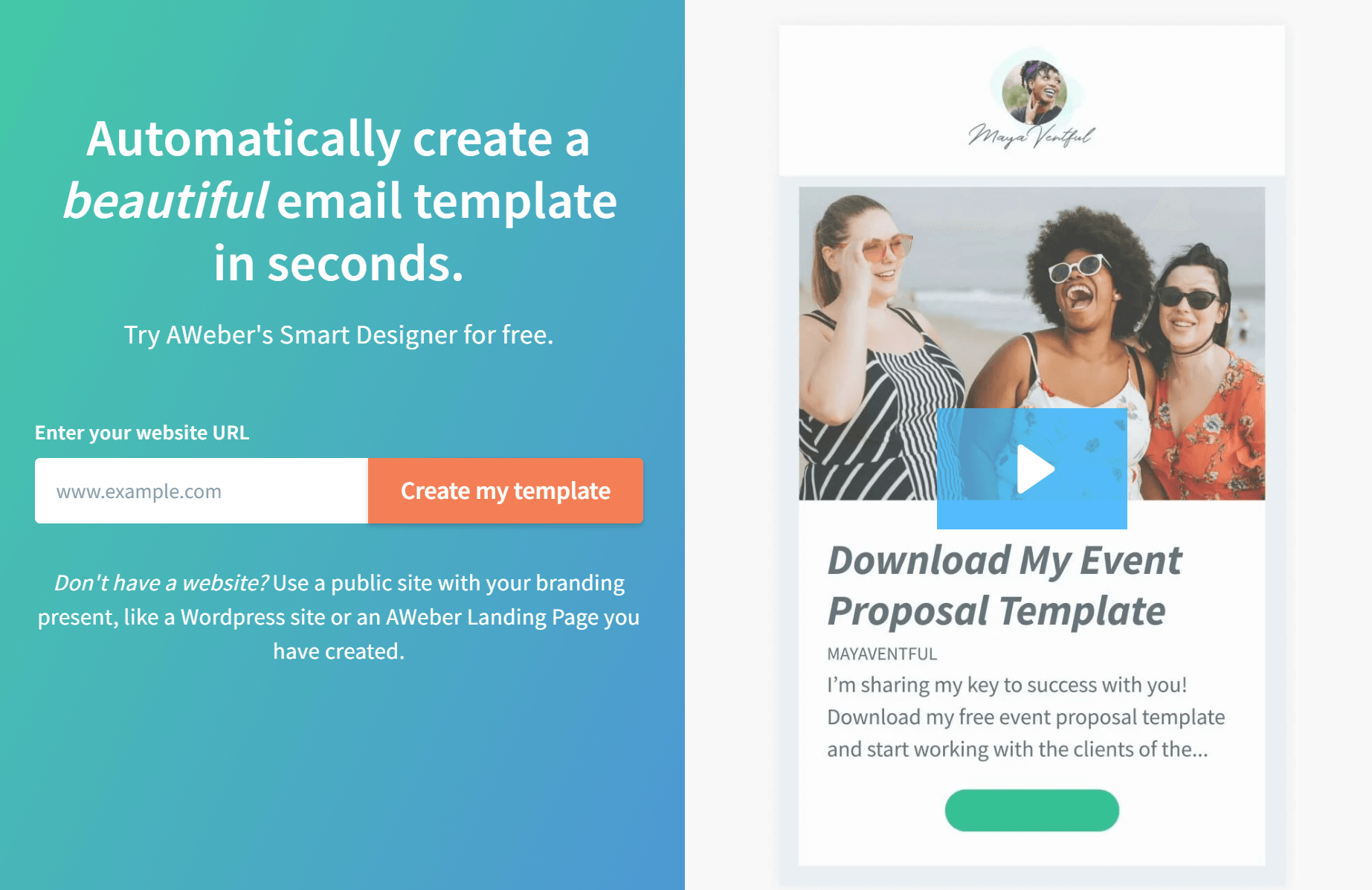
I tested the tool with various websites. For some of them, the results were good (the tool pulled in the logo, color schemes, and a few images), while for others, the output was not impressive. It seems that the result depends on how the website is built or what platform was used to create it. Nevertheless, the Smart Designer is a great tool to have.
Automations
AWeber was a pioneer in email automation, offering what was later known as an autoresponder. So, naturally, you’d expect their automation options to be “mind-blowing.” Let’s see if this is the case.
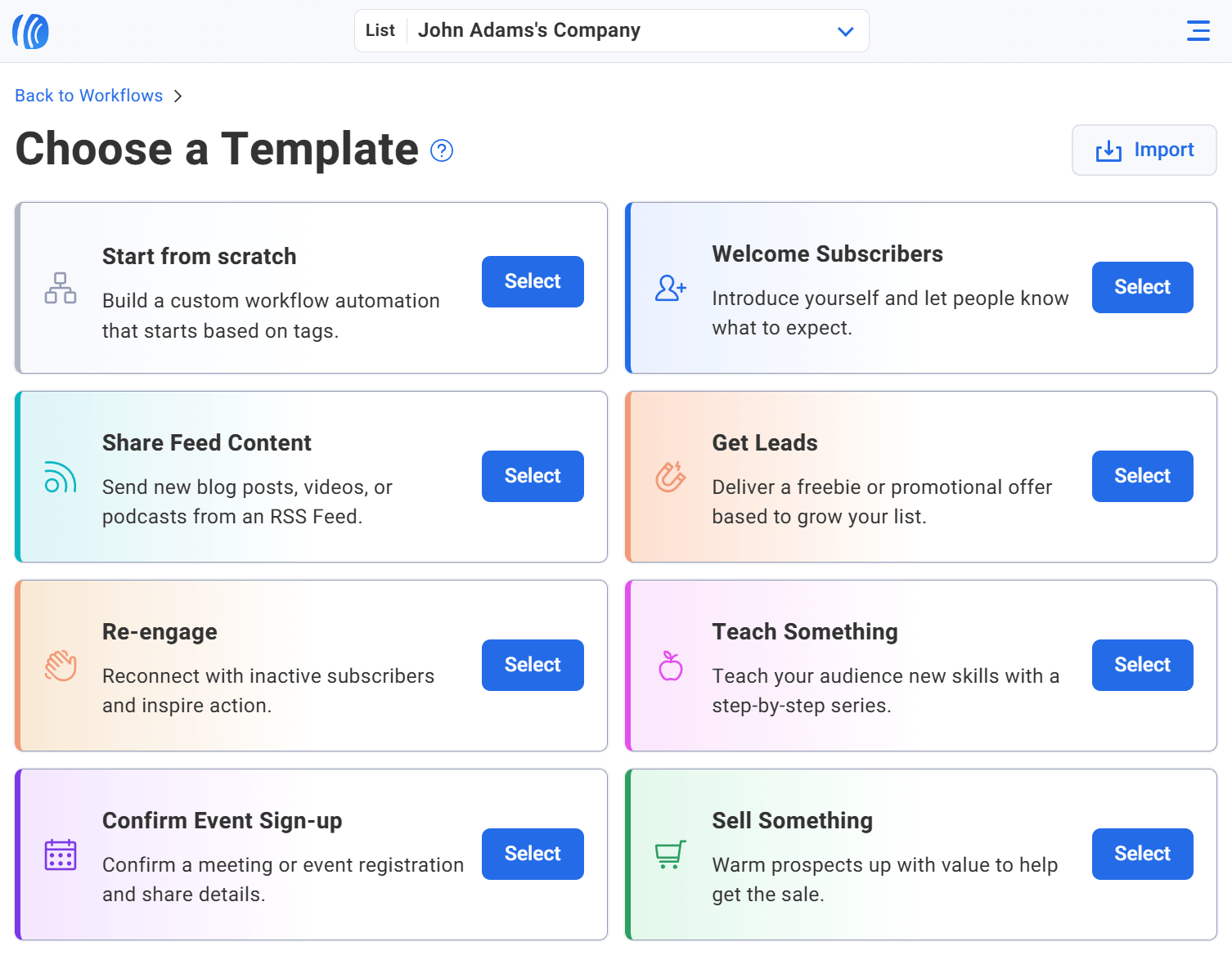
To create your automation workflows, you can select one of the 7 pre-made templates or build a custom workflow from scratch.
There is also a Campaign Marketplace with 13 pre-written campaign templates, covering use cases such as cart abandonment, welcome series, courses, lead generation, and more. However, they aren’t integrated into the platform, and you need to copy and paste them yourself.
When I tested the custom automations option, I found it a bit too simple. You can start a sequence if someone signs up or gets a tag (custom field), but after that, your choices are mostly just sending a message, adding or removing a tag, or pulling the person from the flow.

What I really liked was being able to set delays and pick the exact days messages go out. This can make your nurturing flows feel more natural. On top of that, AWeber shows how each email performs, so fixing the ones that don’t land is pretty straightforward.
Unlike other competing email marketing platforms, though, AWeber doesn’t offer advanced marketing automation (e.g., no if/then conditions).
Segmentation (List Management)
AWeber provides a decent level of control over list management and segmentation.
You can set up rules to automatically tag subscribers based on their behavior, like signing up for a list, opening certain emails, clicking on links, or even removing them from one list if they’ve left another.
Creating segments is pretty simple, too, as you can filter contacts by database fields or by actions such as opens, clicks, website visits, or purchases.

That said, there are a few drawbacks to consider. Finding the segmentation screen isn’t as intuitive as it could be. You have to dig through the “subscribers” section and save a search as a segment.
More importantly, the Lite plan limits you to just one segment, which is quite restrictive for anyone doing serious targeting. And even on higher tiers, you can’t combine multiple segments in a single broadcast, which may frustrate users who need more flexible audience targeting.
Forms
AWeber makes it easy to set up forms for capturing subscribers by accessing the ‘Pages & Forms’ tab of the menu. What I liked is how customizable forms are compared to other platforms I’ve used.
Every template can be used as an in-line form (embedded directly on a page), a pop-up (“Pop-Over”) form, or a lightbox form that dims the background when displayed. There is also the option for a “pop-up in a new window,” though AWeber admits most browsers block these. Exit-intent pop-ups are also available, which is a nice way to catch visitors before they leave.
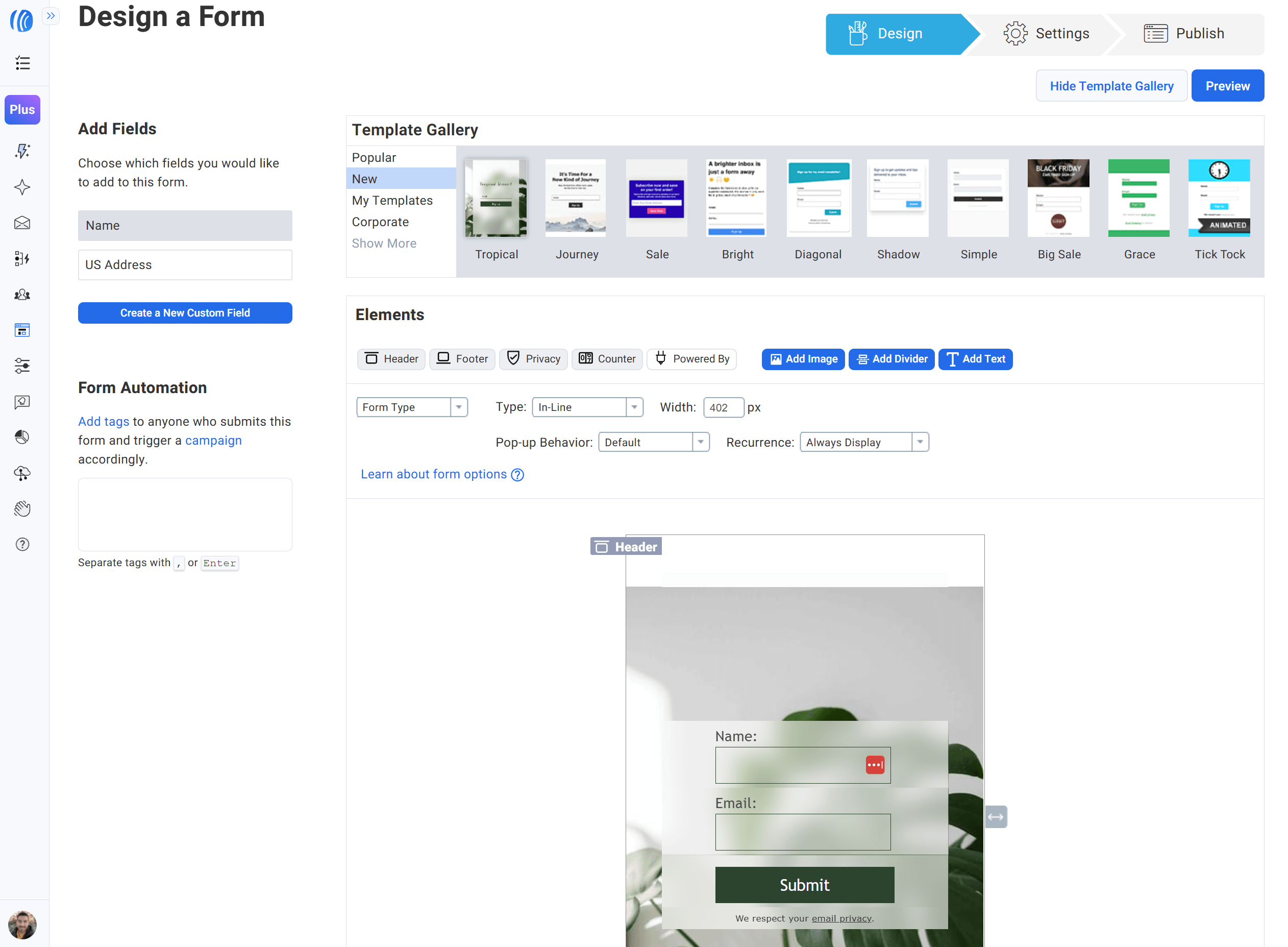
While you get dozens of form templates, the designs lean toward the basic side.
The Form Editor is fairly intuitive, though I found it a bit clunky in places. For example, template thumbnails are arranged horizontally, and with larger categories, some options disappear off the edge of the screen. It doesn’t break usability, but it does feel a little outdated.
One strong point is how seamlessly forms connect with AWeber’s ecosystem. You can add forms to WordPress, Shopify, Squarespace, Wix, or Facebook via plugins and integrations, and even link PayPal signups directly.
Tags can be applied automatically when someone subscribes, letting you trigger autoresponders, like sending new customers a welcome email, account instructions, or even a one-time coupon code. By default, AWeber displays a thank-you page after signup, but you can easily redirect subscribers to a custom URL if you want to send them to a landing page or resource.
Finally, AWeber lets you create split tests for forms, so you can gather information about which forms generate the most subscribers.
Landing Pages
Moving on to AWeber’s landing page builder, I found that it uses the same drag-and-drop engine as the email editor. This makes it easy to get started if you’re already familiar with the platform.

The landing page builder offers a decent selection of beautiful templates (I counted 53 at the time of the review), which look sharper than the email and form templates. They’re colorful, modern, and cover a wide range of use cases, from newsletter opt-ins and event registrations to online courses, webinars, crowdfunding, and even direct sales.
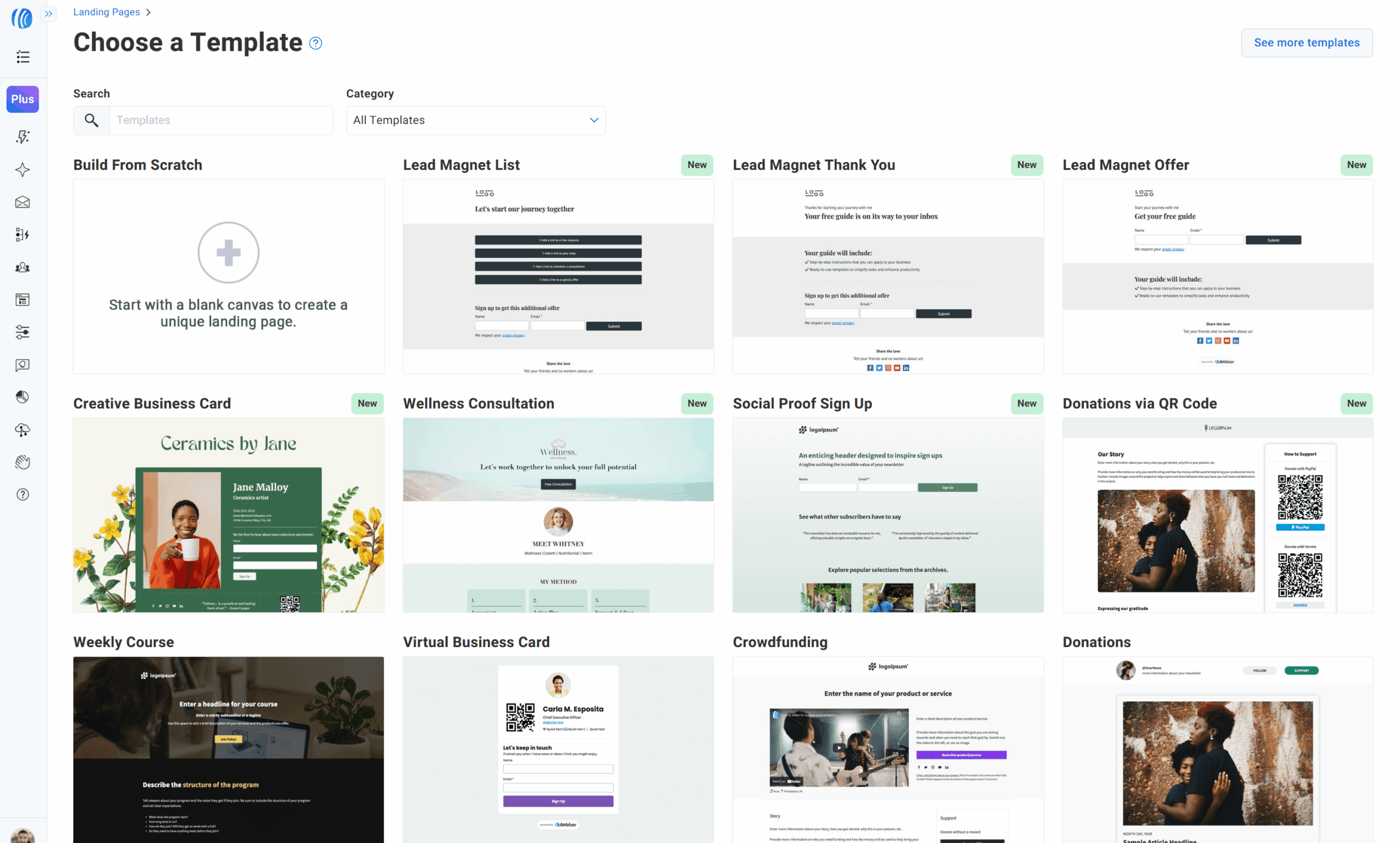
Overall, elements are easy to move, layouts feel flexible, and forms can be matched smoothly to the page design. Every template comes with a built-in signup form, but you can switch it out for a pop-up form if that works better for your campaign.
AWeber’s landing pages also include eCommerce functionality. Specifically, you can connect Stripe to accept payments, donations, or even recurring subscriptions in over 100 currencies. It’s not going to rival a dedicated ecommerce platform like Shopify, but for selling a digital product, booking a coaching session, or taking a quick donation, it gets the job done.
Another notable feature is the Link in Bio page. It works like Linktree for Instagram and TikTok users, letting you create a branded hub for links, signups, and even purchases. This can be very practical for creators and small businesses.
To assess the performance of your landing pages, you can add Google Analytics, while users of the top-tier plan (Plus plan) can also use Facebook pixel.
Reporting & Analytics
AWeber tracks all essential email marketing metrics in the ‘Reports’ tab, including your open rate, clickthrough rate, unsubscribes, and bounces.
It can also provide great overall reports about:
- Clicks over time
- Opens over time
- Sales over time
- Your openers’ geographical location
- Signup methods, and more
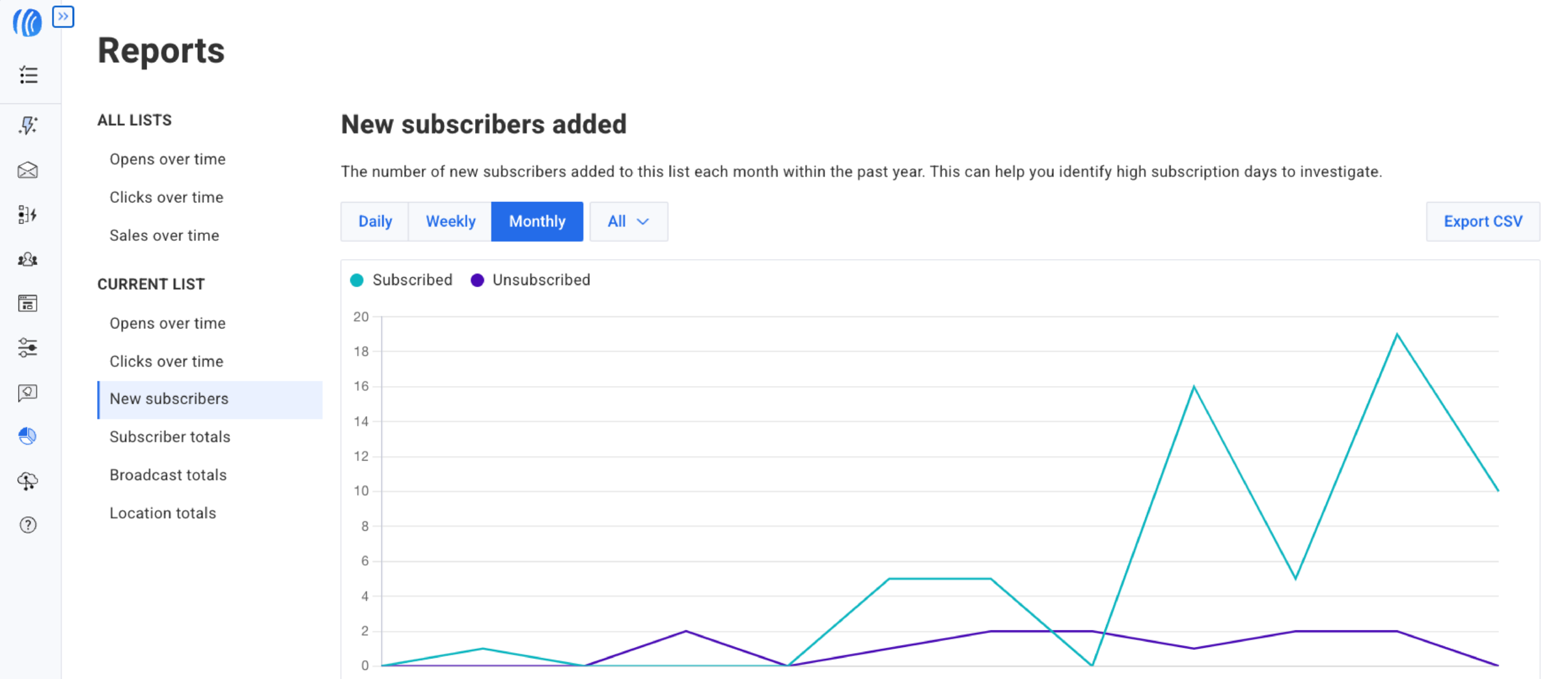
The main downside here is that reports are not available on the free plan, while advanced reporting and eCommerce tracking is reserved for the top-tier plan.
Integrations
AWeber has a large library of integrations with third-party apps. In fact, they are more than 750 in number.
These include popular app categories such as CRM, eCommerce, landing page builders, payment gateways, survey apps and more. Some of the big names include Wix, PayPal, WordPress, Salesforce, and Zapier.
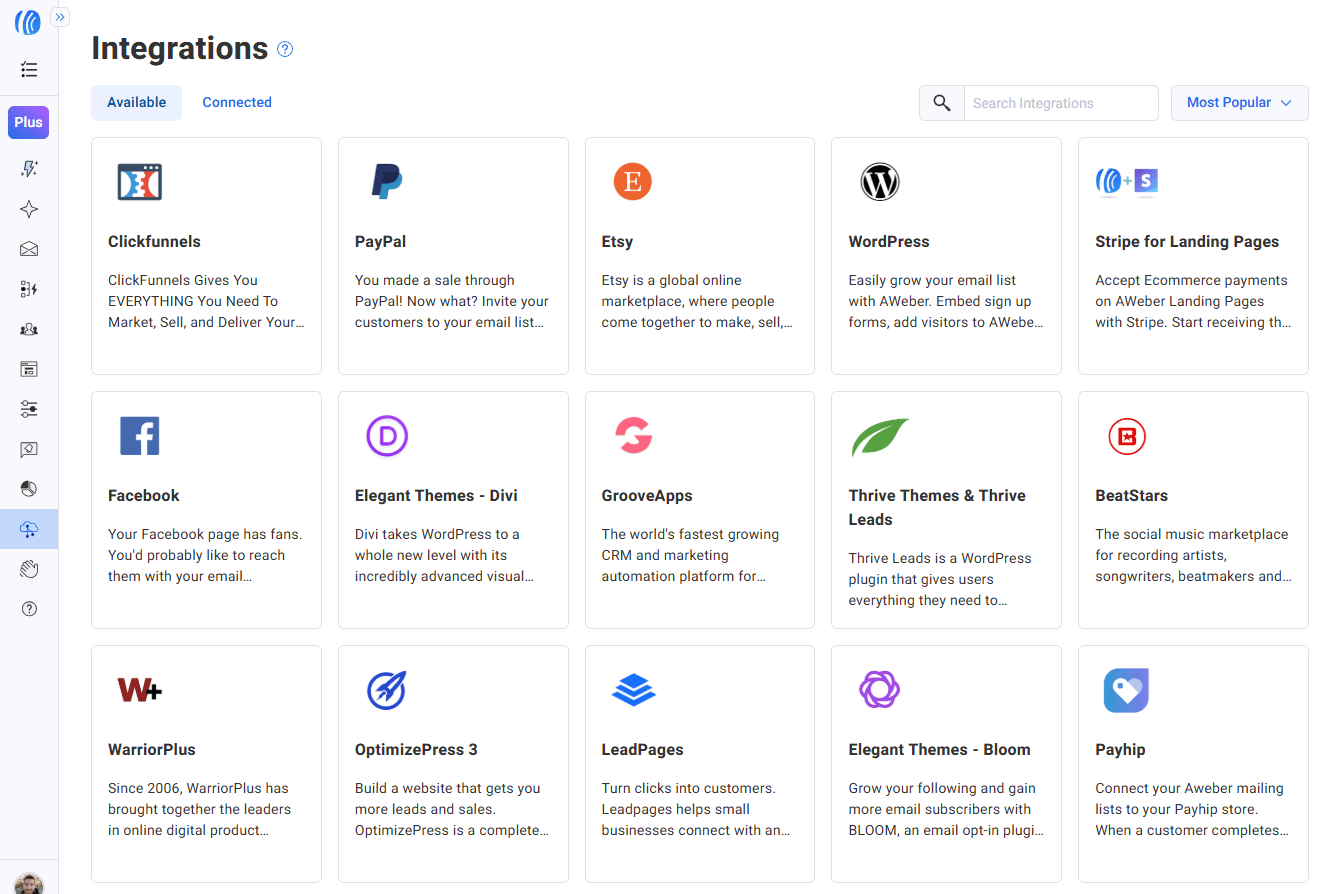
If you have custom needs, AWeber’s RESTful API allows developers to build tailored connections and extend the platform’s functionality.
Customer Support
Customer support is also among AWeber’s strengths. This is because all users with a paid plan have access to live chat, email, and phone support. Especially phone support isn’t always provided by ESPs, or it’s reserved only for top-tier/enterprise plans.
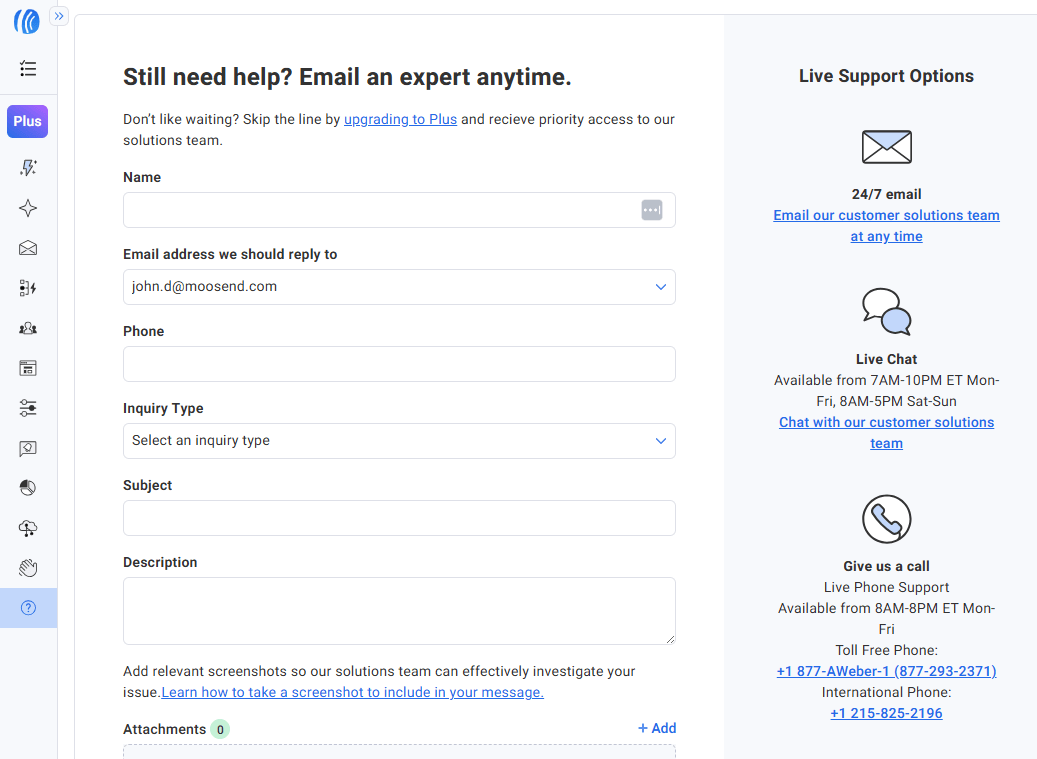
Also, we found AWeber’s customer support team to be friendly and knowledgeable. Email support is available 24/7, and live chat is offered Monday-Friday from 7AM-10PM ET and 8AM-5PM ET on weekends.
Additional support channels include a complete knowledge base and AWeber’s customer community, where you can ask other passionate business owners, share experiences, and get feedback.
If I had to name one “downside” in AWeber’s support, it is that it is only available in English.
Email Deliverability
As you may know, email deliverability is very important so that your email campaigns reach subscribers’ inboxes and don’t land in the spam folder.
Below, you can see how AWeber performed in comparison with other popular email marketing services in EmailToolTester’s deliverability tests.

As you can see, AWeber does a good job, scoring among the top six tools with excellent deliverability.
This isn’t to say that services ranking lower are “bad,” but this small difference can affect your open rates as well as your sales.
AWeber Pricing
Now it’s time to take a look at AWeber’s pricing to see whether it’s worth it.
The platform’s pricing model consists of a free plan and three paid plans (Lite, Plus, and Done For You). There is also a 14-day free trial that allows you to test the platform using its most advanced functionality for that period of time.
Pricing is based on the number of subscribers you have, while committing to an annual subscription can get you up to 4 months free (depending on the plan you select).
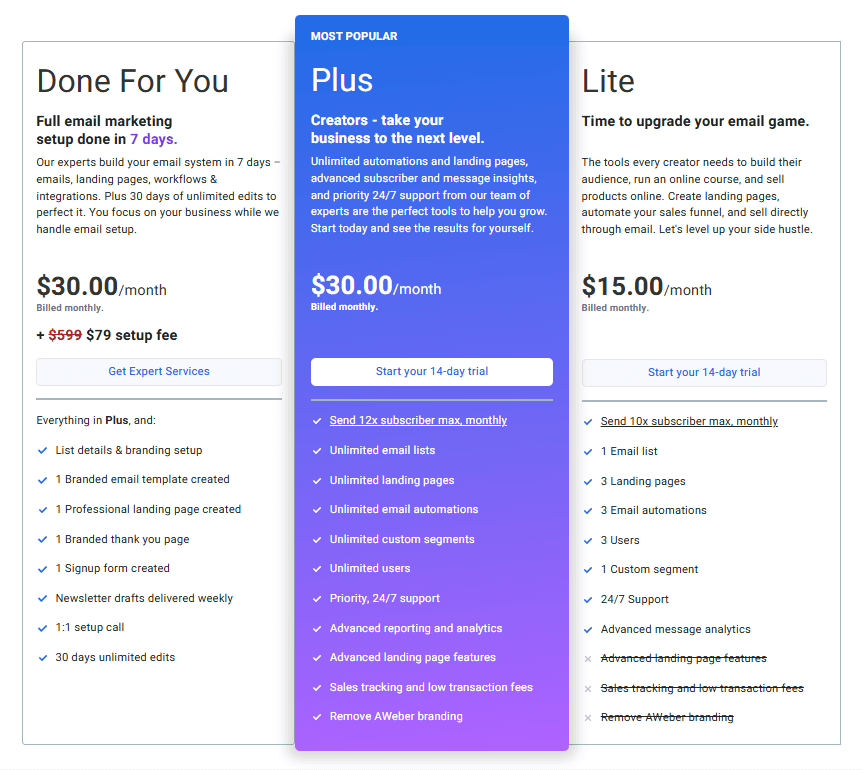
Let’s review each plan individually now.
Free Plan
AWeber’s free plan provides the essentials to start your email marketing journey. You can have up to 500 subscribers and send 3,000 emails/month.
You can use all email design tools (including the Smart Designer), create one automation workflow, build 3 landing pages, and forms.
This plan won’t get you far due to its limitations, but it’s decent to get started.
Lite Plan – $15/month
The Lite plan starts at $15/month (monthly billing) for up to 500 subscribers, allowing you to send 10x your subscriber limit in emails (i.e., 5k emails).
It also comes with limits on the number of email lists, automations, and landing pages you can create. Essentially, it includes most of AWeber’s features without including the more advanced ones.
Plus Plan – $30/month
The Plus plan allows you to take your business to the next level, offering increased email limits (12x contact limit), unlimited automations and landing pages, advanced reporting and analytics, and priority support.
You also get sales tracking and lower transaction fees than the Lite plan (0.6% over 1.0%).
Finally, this plan removes the AWeber branding from your campaigns.
Done For You – $30/month
This plan is based on the Plus plan, but it aims to give you a ready-to-go email platform without having to do “manual” work.
For example, AWeber’s team of experts will set up your emails, landing pages, and workflows, and integrate your system with the necessary apps.
You also get:
- 1 branded email template created
- 1 professional landing page
- 1 branded thank you page
- 1 signup form
- 30 days unlimited edits
Essentially, this plan is for businesses that want to waste no time setting up the platform.
AWeber Pros & Cons
In this section, we’ll recap AWeber’s main pros and cons to help you understand whether or not the service is the right fit for your business.
AWeber Pros
- Robust support: You don’t easily find phone support across all paid plans in other ESPs.
- Landing page builder: With AWeber, you can design beautiful landing pages to get more signups or sell your products. You also get loads of templates for various use cases, so it’s easy to get started.
- Reliable email deliverability: Based on recent tests, AWeber delivers email campaigns reliably. It also includes built-in authentication tools, such as SPF and DKIM.
- Additional features: AWeber offers web push notifications, allowing you to bring visitors back to your website after they’ve left.
AWeber Cons
- Unfair subscriber counting: AWeber counts unsubscribed contacts as part of your list (billable contacts) if they are still in your account. To avoid additional costs, you need to delete them regularly.
- High pricing: The platform has relatively steep pricing, despite the lack of advanced functionality. Other alternatives offer similar features at a better price.
- Lack of advanced automation: Unlike other competitors, you can’t build sophisticated automation journeys. You only get a few basic triggers and actions.
- Limited segmentation: Users of the Lite plan are limited to 1 custom segment. If you’re serious about email marketing, you’ll need “flexibility” to create more segments. In AWeber, you’ll have to upgrade to the top-tier plan to do so.
AWeber Alternatives
After testing and reviewing AWeber’s features, it becomes clear that it’s a simple yet capable solution to deliver professional emails to your audience. It also offers a great landing page builder, eCommerce features, and best of all, phone support across all plans.
However, the truth is that AWeber doesn’t really “stand out” from competing services offering similar functionality at a better price. Furthermore, it lacks advanced marketing automation options and features for spam and design testing.
Based on the above, we researched the market to identify the top three alternatives you should consider.
- Moosend is an email marketing and automation platform that combines advanced features with an affordable price. The tool is very easy to use, even for beginners, and the email editor is modern with a wide range of items to infuse your campaigns with. Among Moosend’s main selling points is the robust automation that’s easy to implement, letting you create both simple and sophisticated customer journeys. Like AWeber, Moosend has a responsive customer support team ready to assist in case you encounter any problems.
- GetResponse is a great AWeber alternative thanks to its advanced automation and all-in-one marketing toolkit. Unlike AWeber’s more basic workflows, GetResponse offers visual automation builders, conversion funnels, and webinar hosting. It also includes built-in ecommerce features, landing pages with A/B testing, and detailed analytics. Finally, the platform includes AI features that can save you time and increase your productivity.
- MailerLite is an ideal solution for users who value simplicity and affordability. Its clean, modern interface makes creating emails and landing pages easy, while its automation builder is more flexible than AWeber’s basic setup. MailerLite includes features like A/B testing, advanced segmentation, and the ability to sell digital products. What’s also great is its generous free plan, letting you start email marketing without commitments.
Conclusion: Is AWeber Still Worth It?
AWeber still delivers the core essentials for small businesses and beginners. These include an easy-to-use email builder, flexible forms, and a surprisingly capable landing page tool. It also deserves credit for its strong customer support and helpful educational resources, which make it approachable for first-time users.
That said, AWeber doesn’t really stand out in any single area. Its automation system feels dated compared to competitors, and the template library could use a refresh. While all paid users get access to most of the features regardless of list size, the platform is priced on par with other alternatives that often provide more advanced tools for the same money.
In short, AWeber is a safe, reliable choice if you value simplicity and responsive support. But if you’re looking for cutting-edge automation, modern templates, or better value at scale, it may be worth exploring newer platforms.Try AWeber
Frequently Asked Questions
Here are some frequently asked questions regarding AWeber’s platform.
1. What is AWeber used for?
AWeber is an email marketing platform designed to help businesses and creators connect with their audience. You can use it to build email lists, design and send newsletters, automate campaigns, create sign-up forms, and even build landing pages with eCommerce options. It’s primarily designed for small businesses, entrepreneurs, and marketers who require reliable tools to manage email campaigns without a steep learning curve.
2. Is AWeber good for beginners?
Yes, AWeber is a beginner-friendly service thanks to its drag-and-drop editor, ready-made templates, and detailed customer support resources (guides, tutorials, and webinars). While its features aren’t as advanced as some competitors’, beginners often find it easy to get started and grow an email list.
3. What are the main limitations of AWeber?
AWeber’s main drawbacks are its limited automation capabilities, lack of built-in A/B testing for landing pages, and expensive pricing to get the full functionality. While it covers the essentials, advanced marketers may find its features restrictive compared to alternatives like Moosend or MailerLite.
4. Can I use AWeber for free?
Yes, AWeber has a free plan that lets you manage up to 500 subscribers and deliver up to 3,000 emails per month. It also includes access to basic features like the email builder, landing pages, forms, and reporting. However, it has limitations and lacks more advanced features such as split testing, behavioral automation, and the ability to remove AWeber branding.

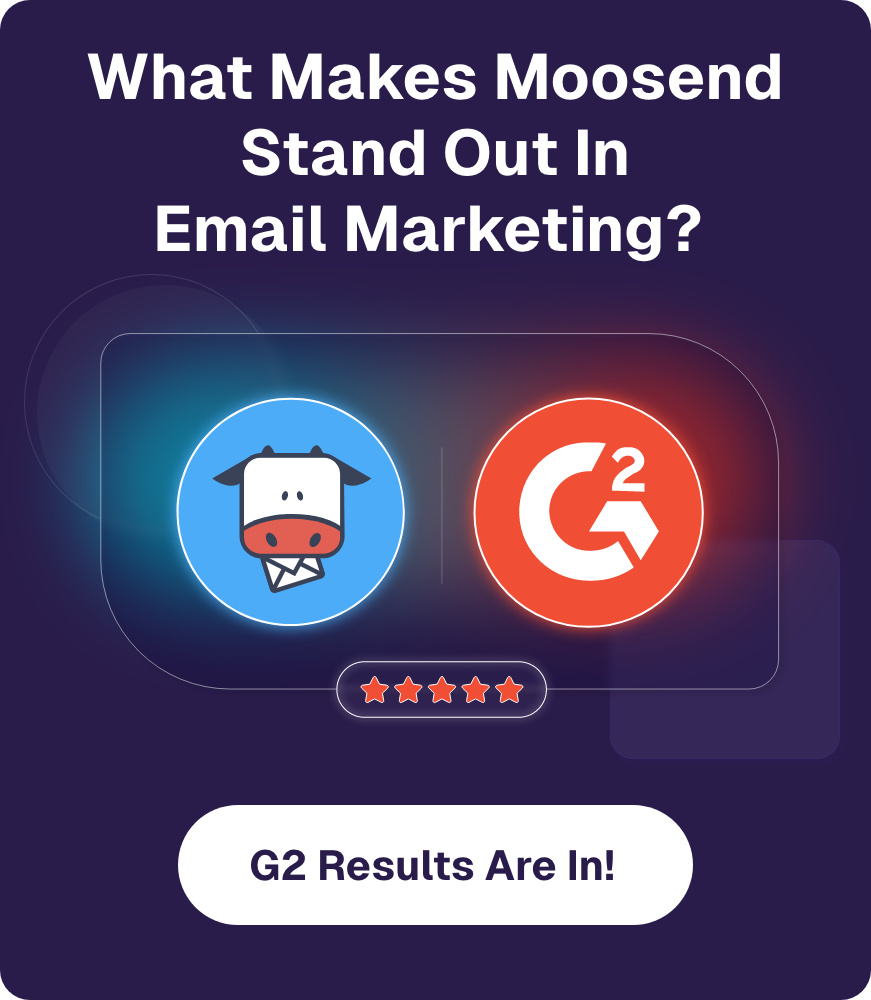



 Published by
Published by
